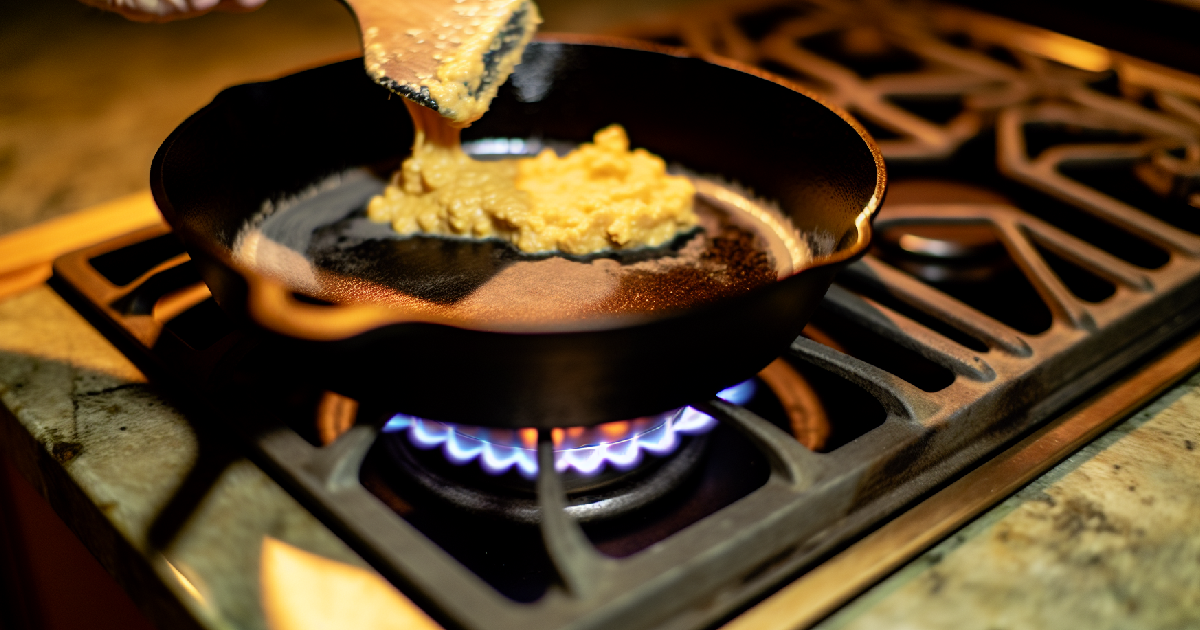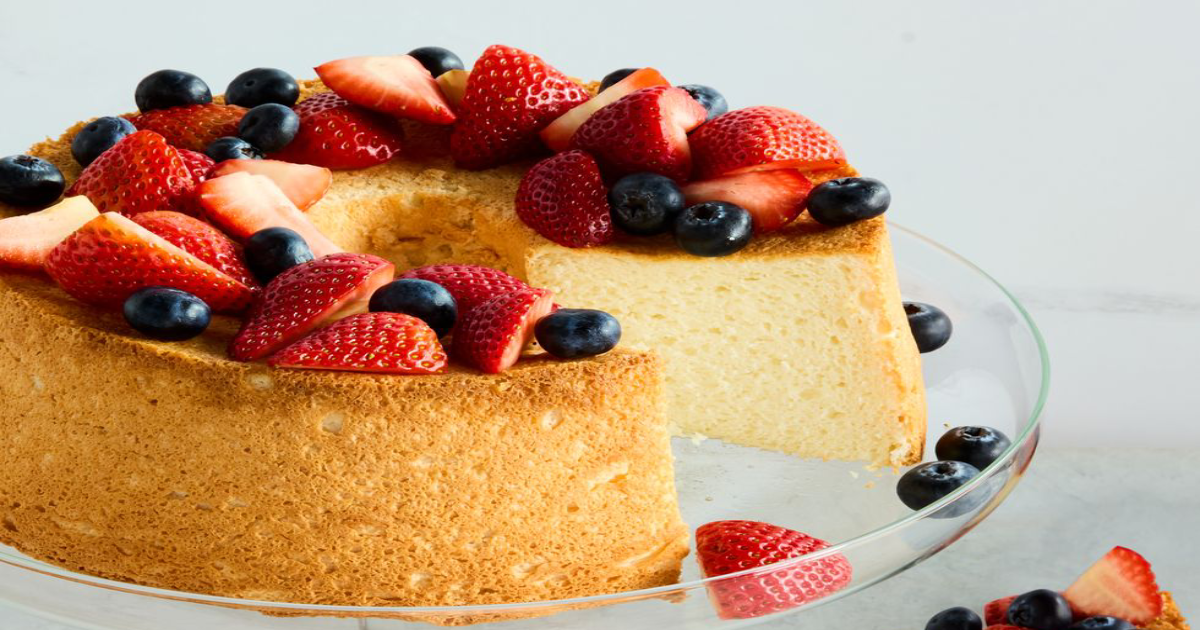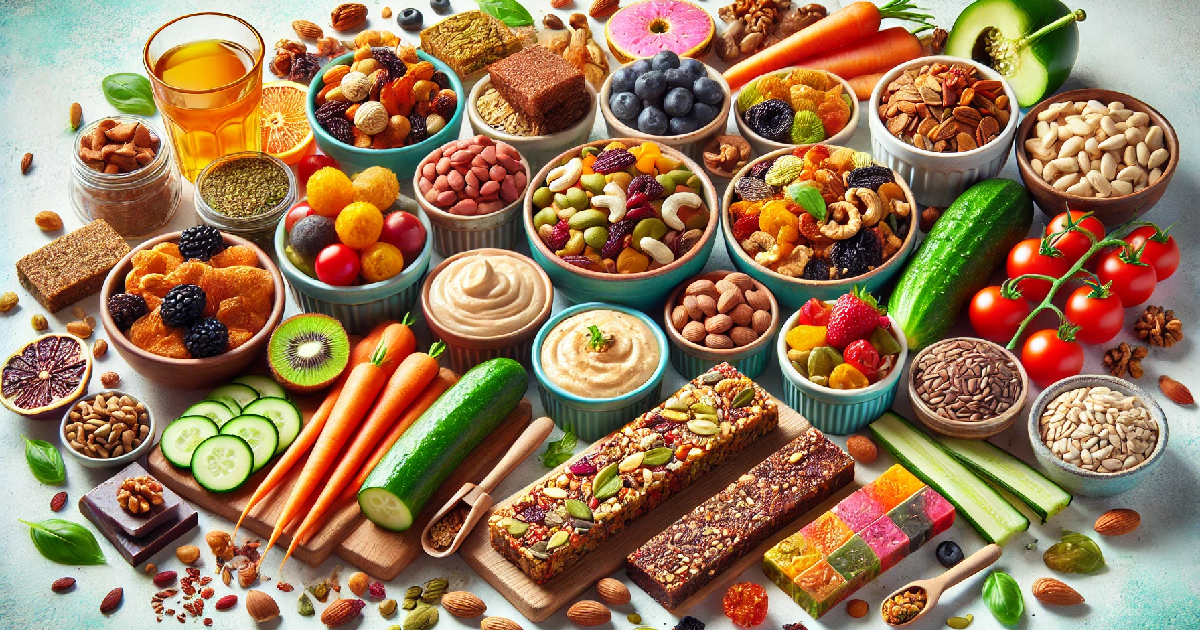Vegan cheese has revolutionized the culinary world, offering a delicious, cruelty-free alternative for cheese lovers. However, while its taste and texture have improved, one challenge remains: how to melt vegan cheese perfectly. Whether you’re making a gooey grilled cheese, a creamy pasta dish, or the ultimate pizza, knowing how to achieve that perfect melt is essential.
How to Melt Vegan Cheese
Melting vegan cheese might seem daunting initially, but with the proper techniques, you can achieve a perfect, gooey texture every time. Let’s explore the primary methods to melt vegan cheese.
Steps to Melt Vegan Cheese on the Stove
Melting vegan cheese on the Stove is popular due to its simplicity and control over the heat. Here’s how you can do it effectively:
- Preparation: Grate or slice your vegan cheese for even and quick melting. Use a non-stick skillet or saucepan to prevent sticking.
- Heating: Place the skillet over medium-low heat. Add plant-based milk or oil to the pan to prevent sticking and achieve a smoother melt.
- Melting: Add the cheese to the skillet, stirring continuously to ensure even melting and prevent clumping. Keep the heat low to avoid burning the cheese.
- Finishing: Once the cheese reaches a smooth, creamy consistency, remove it from the heat and use it immediately.
Tips for preventing sticking and burning:
- Always keep the heat low to medium.
- Stir constantly to prevent burning.
- Adding a liquid like plant-based milk can help create a smoother texture.
Steps to Melt Vegan Cheese in the Oven
Melting vegan cheese in the Oven is perfect for dishes like pizzas and casseroles. Here’s how:
- Preparation: Preheat your oven to 350°F (175°C). Grate or slice your vegan cheese and spread it evenly over the dish.
- Placement: Place the dish in the Oven. Consider covering it with aluminum foil for the first half of the cooking time for an even melt.
- Baking: Bake for about 10-15 minutes, checking regularly to ensure the cheese is melting and not burning. Remove the foil in the last few minutes to allow the cheese to brown slightly if desired.
- Completion: Once the cheese is melted and bubbly, remove the dish from the oven and let it cool for a few minutes before serving.
Temperature and time guidelines:
- Preheat the oven to 350°F (175°C).
- Bake covered for the first 10 minutes, then uncover for the remaining 5 minutes.
Steps to Melt Vegan Cheese in the Microwave
A microwave is the quickest method to melt vegan cheese, ideal for small quantities or in a hurry. Here’s how:
- Preparation: Grate or slice the cheese and place it in a microwave-safe bowl. Adding a splash of plant-based milk can help achieve a smoother consistency.
- Microwaving: Set the microwave to medium power. Heat the cheese in 30-second intervals, stirring between intervals to prevent overheating and ensure even melting.
- Completion: Continue microwaving and stirring until the cheese is fully melted and smooth. Use it immediately for best results.
Tips for even melting:
- Use medium power settings to avoid overheating.
- Stir between intervals to ensure an even melt.
Best Vegan Cheese for Melting

Finding the best vegan cheese for melting can transform your dishes. Here’s an overview of the best vegan cheese brands for melting and how they compare to traditional cheese.
Vegan Cheese Brands That Melt Well
Several vegan cheese brands stand out for their excellent melting abilities:
- Daiya: Known for its versatility and availability, Daiya melts well in various dishes, becoming creamy and stretchy when heated.
- Follow Your Heart: This brand offers a range of vegan cheeses that melt beautifully, with a smooth, creamy texture great for sauces and grilled cheese sandwiches.
- Violife: Renowned for their ability to melt and stretch like traditional cheese, Violife’s cheeses are ideal for nachos or quesadillas.
- Chao: Made by Field Roast, Chao slices melt well and have a mild, savory flavor, perfect for sandwiches and burgers.
- Miyoko’s Creamery: Miyoko’s offers artisan vegan cheeses that melt exceptionally well, with a rich, creamy consistency ideal for gourmet dishes.
Vegan Cheese That Melts Like Real Cheese

Vegan cheeses that melt like real cheese often contain ingredients that enhance their melting capabilities, such as coconut oil and starches. Daiya and Violife are particularly noted for their ability to melt and stretch, closely resembling mozzarella and cheddar cheeses. Follow Your Heart and Chao also perform well, offering a creamy melt similar to dairy cheese.
| Vegan Cheese Brand | Melting Properties | Best For |
|---|---|---|
| Daiya | Creamy, stretchy | Pizza, casseroles |
| Follow Your Heart | Smooth, creamy | Sauces, grilled cheese |
| Violife | Melts, stretches | Nachos, quesadillas |
| Chao | Mild, savory | Sandwiches, burgers |
| Miyoko’s Creamery | Rich, creamy | Gourmet dishes |
Tips and Tricks for Perfectly Melting Vegan Cheese
Achieving the perfect melt with vegan cheese can be tricky, but with the right tips and tricks, you can enjoy a creamy, smooth texture every time.
Vegan Cheese Melting Point
Different vegan cheeses have varying melting points. Knowing the melting point of your chosen vegan cheese can help you achieve a perfect melt. For example, Daiya cheese melts at around 130°F (54°C), making it ideal for oven baking and stovetop melting. Violife cheese has a similar melting point, which allows it to stretch and become creamy at moderate temperatures.
How to Make Vegan Cheese Melt Smoothly
Certain additives or methods can be employed to achieve a smooth melt. Adding a small amount of liquid, such as plant-based milk or water, can significantly improve the texture. Another effective method is a double boiler, which prevents the cheese from direct contact with high heat, reducing the risk of burning. Stirring continuously while melting the cheese ensures even heat distribution and prevents clumping. Incorporating some oil, such as coconut or olive oil, can also enhance the melting process.
Easy Ways to Melt Vegan Cheese
For beginners, here are some quick tips and tricks:
- Grate the Cheese: Smaller pieces melt more evenly and quickly.
- Use a Lid: When melting cheese on the Stove, covering the pan with a lid traps steam and helps the cheese melt faster.
- Microwave in Intervals: Heat the cheese briefly (15-30 seconds), stirring in between to prevent uneven melting.
- Add Liquid: A splash of plant-based milk can make a significant difference.
- Low and Slow: On the Stove or in the Oven, melting cheese slowly at a low temperature prevents it from becoming rubbery or burnt.
| Method | Tip |
|---|---|
| Grating | Ensures even and quick melting |
| Using a Lid | Traps steam for faster melting |
| Microwaving in Intervals | Prevents uneven melting |
| Adding Liquid | Achieves a smooth consistency |
| Low and Slow | Prevents rubbery or burnt cheese |
How to Melt Vegan Cheese on Pizza
Melting vegan cheese on pizza can be a delightful experience. Here are the specific methods for melting vegan cheese on pizza using the Oven and the Stove.
Oven Method for Melting Vegan Cheese on Pizza

Using the Oven is the most traditional and effective way to melt vegan cheese on pizza. Here’s a step-by-step guide:
- Preparation: Preheat your oven to 450°F (232°C). Spread your pizza dough on a baking sheet or pizza stone and add your desired sauce and toppings.
- Adding Cheese: Grate or slice your vegan cheese for even distribution. Scatter the cheese evenly over the pizza.
- Baking: Place the pizza in the preheated Oven. Bake for about 10-15 minutes, checking periodically. Consider rotating the pizza halfway through the baking time for an even melt.
- Finishing Touch: Once the cheese is bubbly and slightly browned, remove the pizza from the Oven. Let it cool for a couple of minutes before slicing.
Temperature settings: Preheat to 450°F (232°C) and bake for 10-15 minutes.
Stove Method for Melting Vegan Cheese on Pizza
If you don’t have an oven, you can melt vegan cheese on pizza using a stove:
- Preparation: Use a non-stick skillet that fits your pizza size. Preheat the skillet over medium heat.
- Cooking the Base: Place the pizza base in the skillet. Cover it with a lid to trap heat and create an oven-like environment. Cook for about 3-5 minutes until the base crisps.
- Adding Cheese: Add grated or sliced vegan cheese over the pizza. Cover the skillet again to help the cheese melt evenly. Reduce the heat to low to prevent burning the crust.
- Melting the Cheese: Cook for another 5-7 minutes, checking periodically. The trapped steam under the lid helps the cheese melt smoothly. If the cheese isn’t melting, add a few drops of water to the skillet and cover it quickly to create more steam.
Tips for even melting:
- Use a lid to trap steam and heat.
- Reduce heat to low after adding cheese to prevent burning.
- Add a few drops of water to enhance melting with steam.
How to Melt Vegan Cheese for Sauce

Creating a smooth and creamy vegan cheese sauce can elevate many dishes, from pasta to nachos. Here’s how to make a delicious vegan cheese sauce and the best methods for achieving a smooth consistency.
Vegan Cheese Sauce Recipe
Ingredients:
- 1 cup of grated vegan cheese (Daiya, Follow Your Heart, or Violife)
- 1 cup of unsweetened plant-based milk (almond, soy, or oat milk)
- 2 tablespoons of nutritional yeast
- 1 tablespoon of cornstarch or arrowroot powder (for thickening)
- 1 tablespoon of vegan butter or coconut oil
- 1 teaspoon of garlic powder
- 1 teaspoon of onion powder
- Salt and pepper to taste
Steps:
- Preparation: Grate the vegan cheese if it’s not pre-shredded.
- Mixing: In a medium saucepan, combine the plant-based milk, nutritional yeast, garlic powder, onion powder, and cornstarch. Whisk until smooth.
- Heating: Place the saucepan over medium heat and add the vegan butter. Stir continuously to prevent sticking and burning.
- Adding Cheese: Once the mixture begins to warm, gradually add the grated vegan cheese. Stir continuously until the cheese is fully melted and the sauce is smooth.
- Final Touches: Adjust the seasoning with salt and pepper to taste. If the sauce is too thick, add a splash of plant-based milk. Let it simmer if it’s too thin until it reaches the desired consistency.
Best Methods to Melt Vegan Cheese for Sauce
Achieving a smooth consistency when melting vegan cheese for sauce involves several vital techniques:
- Low and Slow Heating: Always melt vegan cheese over low to medium heat to prevent separation or burning.
- Continuous Stirring: Stir the cheese continuously to ensure even heat distribution and prevent clumping. Using a whisk can help achieve a smoother texture.
- Adding Liquid: Incorporate a liquid, such as plant-based milk, to the cheese as it melts to achieve a creamy consistency and prevent the cheese from becoming too thick or clumpy.
- Using a Thickener: Adding a thickening agent like cornstarch or arrowroot powder can help achieve a velvety texture. Dissolve the thickener in cold plant-based milk before adding it to the cheese mixture to prevent lumps.
- Incorporating Fat: Adding a small amount of vegan butter or coconut oil can enhance the sauce’s creaminess.
| Technique | Benefit |
|---|---|
| Low and Slow Heating | Prevents separation and burning |
| Continuous Stirring | Ensures even melting |
| Adding Liquid | Achieves creamy consistency |
| Using a Thickener | Creates a velvety texture |
| Incorporating Fat | Enhances creaminess |
Common Problems and Solutions
Melting vegan cheese can sometimes be challenging. Common issues can arise, such as the cheese not melting correctly, clumping, or burning, and this article will explain how to troubleshoot them.
Why Does My Vegan Cheese Not Melt?

There are several reasons why vegan cheese might not melt as expected. One common reason is the type of cheese. Some vegan cheese brands are designed more for flavor and texture than for melting. Another reason is the lack of moisture. Vegan cheese needs a bit of liquid to melt smoothly. If your cheese is too dry, it may not melt properly. Adding a small amount of plant-based milk or water can help. Finally, the temperature can affect melting. Vegan cheese requires a lower melting point compared to dairy cheese. If the heat is too high, the cheese can become hard instead of melting smoothly.
Common fixes:
- Choose vegan cheese brands known for melting, such as Daiya or Violife.
- Add moisture by incorporating a splash of plant-based milk or water.
- Use low to medium heat to avoid hardening the cheese.
How to Prevent Clumping
Clumping is another common issue when melting vegan cheese. It often occurs when the cheese is not stirred continuously or when the heat is too high. To achieve a smooth melt, you need to take specific steps.
First, grate or slice the cheese finely. Smaller pieces melt more evenly and reduce the risk of clumping. Second, continuously stir the cheese as it melts to ensure even heat distribution and prevent it from sticking together. Third, use a whisk instead of a spoon. A whisk can help break up any clumps and create a smoother texture.
Tips for achieving a smooth melt:
- Grate or slice the cheese finely.
- Stir continuously while melting.
- Use a whisk to break up clumps.
How to Avoid Burning
Burning is a common issue that can ruin the texture and flavor of vegan cheese. It typically happens when the heat is too high, or the cheese is not stirred frequently enough. Always melt vegan cheese over low to medium heat. High heat can cause the cheese to burn before it can melt properly. Use a non-stick pan to reduce the risk of sticking and burning. Stir the cheese continuously to prevent it from sitting too long on the hot surface. Finally, adding a small amount of plant-based milk or oil can create a barrier that helps prevent burning.
Temperature control and stirring tips:
- Use low to medium heat to avoid burning.
- Opt for a non-stick pan to reduce sticking.
- Stir continuously and add liquid to prevent burning.
| Problem | Common Reasons | Solutions |
|---|---|---|
| Cheese not melting | Wrong cheese type, lack of moisture | Use meltable brands, add moisture, lower heat |
| Clumping | Inadequate stirring, high heat | Grate finely, stir continuously, use a whisk |
| Burning | High heat, insufficient stirring | Use low/medium heat, non-stick pan, add liquid |
Recipes Using Melted Vegan Cheese
Melted vegan cheese can elevate various dishes, making them rich and creamy. Here are some delicious recipes that showcase the versatility and flavor of melted vegan cheese.
Vegan Grilled Cheese Sandwich

A classic comfort food, the vegan grilled cheese sandwich is simple to make and incredibly satisfying. Here’s how to prepare it:
Ingredients:
- 2 slices of your favorite bread
- 2-3 slices of vegan cheese (Daiya, Follow Your Heart, or Violife)
- 1 tablespoon of vegan butter
- Optional: Tomato slices, spinach, or avocado for extra flavor
Steps:
- Preparation: Spread vegan butter on one side of each bread slice. Place the vegan cheese slices between the unbuttered sides of the bread.
- Cooking: Heat a non-stick skillet over medium heat. Place the sandwich in the skillet, buttered side down.
- Grilling: Cook for 2-3 minutes until the bread is golden brown and the cheese begins to melt. Flip the sandwich and cook the other side for 2-3 minutes.
- Serving: Remove from the skillet and let it cool slightly before slicing. Enjoy your delicious vegan grilled cheese sandwich.
Vegan Mac and Cheese

Vegan mac and cheese is a creamy, comforting dish for any occasion. Here’s a simple recipe:
Ingredients:
- 2 cups of elbow macaroni
- 1 cup of grated vegan cheese
- 1 cup of unsweetened plant-based milk
- 2 tablespoons of nutritional yeast
- 1 tablespoon of cornstarch or arrowroot powder
- 1 tablespoon of vegan butter
- 1 teaspoon of garlic powder
- 1 teaspoon of onion powder
- Salt and pepper to taste
Steps:
- Cooking Pasta: Cook the macaroni according to package instructions. Drain and set aside.
- Making Sauce: In a medium saucepan, combine plant-based milk, nutritional yeast, garlic powder, onion powder, and cornstarch. Whisk until smooth.
- Heating: Place the saucepan over medium heat and add the vegan butter. Stir continuously until the mixture begins to thicken.
- Adding Cheese: Gradually add the grated vegan cheese, stirring continuously until fully melted and smooth.
- Combining: Add the cooked macaroni to the sauce. Stir until the pasta is evenly coated. Adjust seasoning with salt and pepper.
- Serving: Serve hot, garnished with fresh herbs or breadcrumbs if desired.
Vegan Quesadillas

Vegan quesadillas are a quick and tasty meal option, perfect for lunch or dinner. Here’s how to make them:
Ingredients:
- 4 flour tortillas
- 1 cup of grated vegan cheese
- 1/2 cup of black beans, drained and rinsed
- 1/2 cup of corn kernels
- 1/4 cup of diced bell peppers
- 1/4 cup of chopped onions
- 1 tablespoon of olive oil
- Optional: Salsa, guacamole, or vegan sour cream for serving
Steps:
- Preparation: Heat olive oil in a skillet over medium heat. Sauté the onions and bell peppers until soft. Add the black beans and corn, and cook for another 2-3 minutes.
- Assembling: Place a tortilla in a clean skillet over medium heat. Sprinkle a portion of grated vegan cheese over the tortilla. Add the sautéed vegetables evenly over the cheese. Top with another tortilla.
- Cooking: Cook for 2-3 minutes until the bottom tortilla is golden brown and the cheeseIt begins to melt. Carefully flip the quesadilla and cook the other side for 2-3 minutes.
- Serving: Remove from the skillet and cut into wedges. Serve hot with salsa, guacamole, or vegan sour cream.
Conclusion
Melting vegan cheese may seem challenging, but with the right tips, techniques, and practice, you can achieve creamy, gooey perfection every time. We’ve explored various methods for melting vegan cheese, from the Stove and Oven to creating smooth sauces and incorporating it into delicious recipes like grilled cheese sandwiches, mac and cheese, and quesadillas. Each approach offers unique benefits and can be tailored to your needs and preferences. Remember, the key is to understand the melting properties of your chosen vegan cheese and to apply the correct techniques to ensure a perfect melt.
I encourage you to experiment with different methods and vegan cheese brands to find the best. Don’t be afraid to get creative in the kitchen—sometimes, the most delicious results come from a bit of culinary exploration and innovation.
As you try the recipes shared in this post, remember that cooking is an ever-evolving journey. Each dish you create adds to your repertoire and helps you understand your ingredients better. So, embrace the process, enjoy the flavors, and keep experimenting.
Ultimately, the ability to perfectly melt vegan cheese is not just about achieving a specific texture—it’s about enhancing your culinary skills and enjoying the delicious rewards of your efforts. Try the recipes, share your feedback, and let’s continue to explore the wonderful world of vegan cooking together. Happy melting!
FAQs
1. How to melt Daiya cheese?
Due to its excellent melting properties, melting Daiya cheese is straightforward. To melt Daiya cheese, grate or slice it finely and add it to your dish. For stovetop melting, use low to medium heat and stir continuously. In the Oven, preheat to 350°F (175°C) and bake until the cheese is bubbly and melted, usually 10-15 minutes. Heat 30-second intervals for microwave melting, stirring between intervals until fully melted.
2. Can you melt vegan cheese in the microwave?
Yes, you can melt vegan cheese in the microwave. Place the cheese in a microwave-safe bowl. Add a splash of plant-based milk to help achieve a smooth texture. Heat the cheese in 30-second intervals on medium power, stirring between intervals to ensure even melting. Continue until the cheese is fully melted and smooth.
3. What’s the best way to melt store-bought vegan cheese?
The best way to melt store-bought vegan cheese depends on your dish. For stovetop melting, use low to medium heat and stir continuously. Preheat the Oven to 350°F (175°C) and bake until the cheese is melted and bubbly. For quick results, use the microwave in 30-second intervals, stirring between intervals. Adding a bit of plant-based milk or oil can improve the texture.
4. Does vegan cheese have a different melting point?
Yes, vegan cheese typically has a different melting point than dairy cheese. The melting point of vegan cheese can vary depending on the ingredients used. Generally, vegan cheeses melt at lower temperatures, usually between 120°F and 150°F (49°C to 65°C). Understanding the specific melting point of your chosen vegan cheese can help you achieve better results.
5. Can I melt vegan cheese without oil?
Yes, you can melt vegan cheese without oil. Adding a small amount of plant-based milk or water can help achieve a smooth, creamy texture without needing oil. For stovetop melting, use low to medium heat and stir continuously. Cover the dish with foil for oven melting to trap moisture and prevent the cheese from drying.
6. How do I store melted vegan cheese?
To store melted vegan cheese, allow it to cool to room temperature. Transfer the cheese to an airtight container and refrigerate it. It can be stored in the refrigerator for up to 5 days. To reheat, use low heat on the Stove or microwave in short intervals, stirring frequently to maintain a smooth consistency.
7. Can I use melted vegan cheese in baking?
Yes, melted vegan cheese can be used in baking. It works well in recipes that call for melted cheese, such as casseroles, lasagnas, and stuffed vegetables. Ensure the cheese is evenly distributed, and use a low to medium oven temperature to prevent burning. Adding a bit of plant-based milk can help maintain a creamy texture during baking.
8. What are the healthiest vegan cheese options?
The healthiest vegan cheese options are those made with whole, natural ingredients and minimal additives. Look for brands that use nuts, seeds, or vegetables as their base. Miyoko’s Creamery, Kite Hill, and Treeline are known for their healthier, artisanal vegan cheeses. Nutritional yeast-based cheeses are also a good option, providing a rich source of B vitamins.
9. How to make homemade vegan cheese melt better?
Add ingredients that enhance melting properties to make homemade vegan cheese melt better. Incorporate a bit of tapioca starch, which helps create a stretchy texture. Adding a small amount of coconut oil or vegan butter can improve creaminess. Using a food processor to blend the ingredients until smooth before cooking can also help achieve a better melt.
10. Can melted vegan cheese be refrozen?
Refreezing melted vegan cheese is generally not recommended. The texture and consistency can change significantly upon thawing, resulting in less desirable results. If you have leftovers, store them in the refrigerator and consume them within a few days. If you must freeze, expect changes in texture and be prepared to reheat gently to restore some of the original consistency.

























